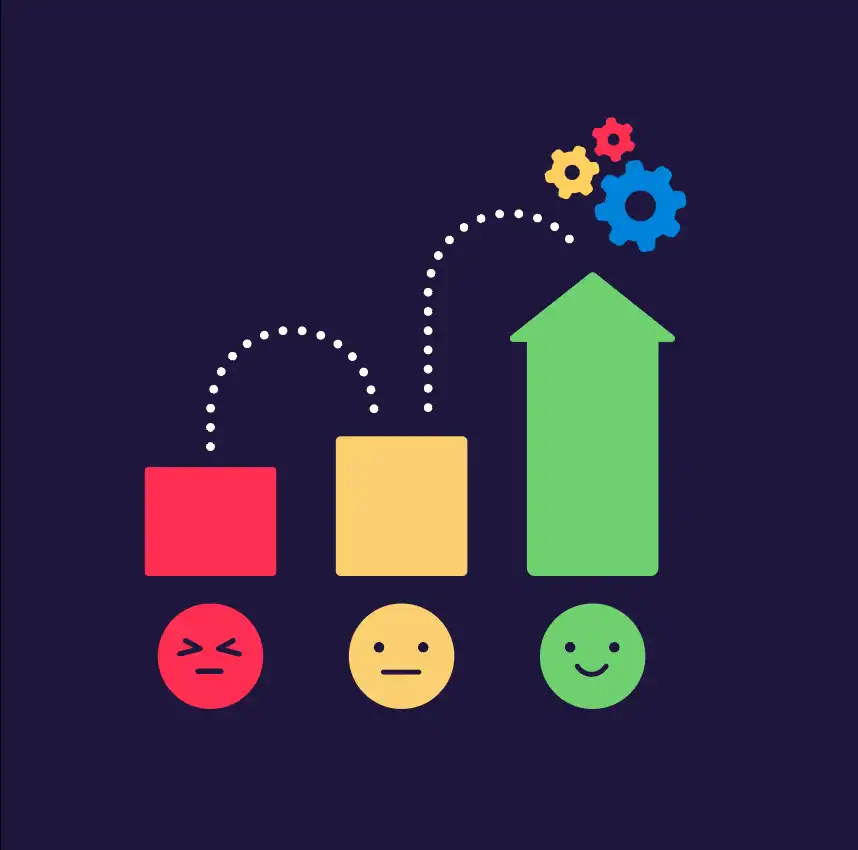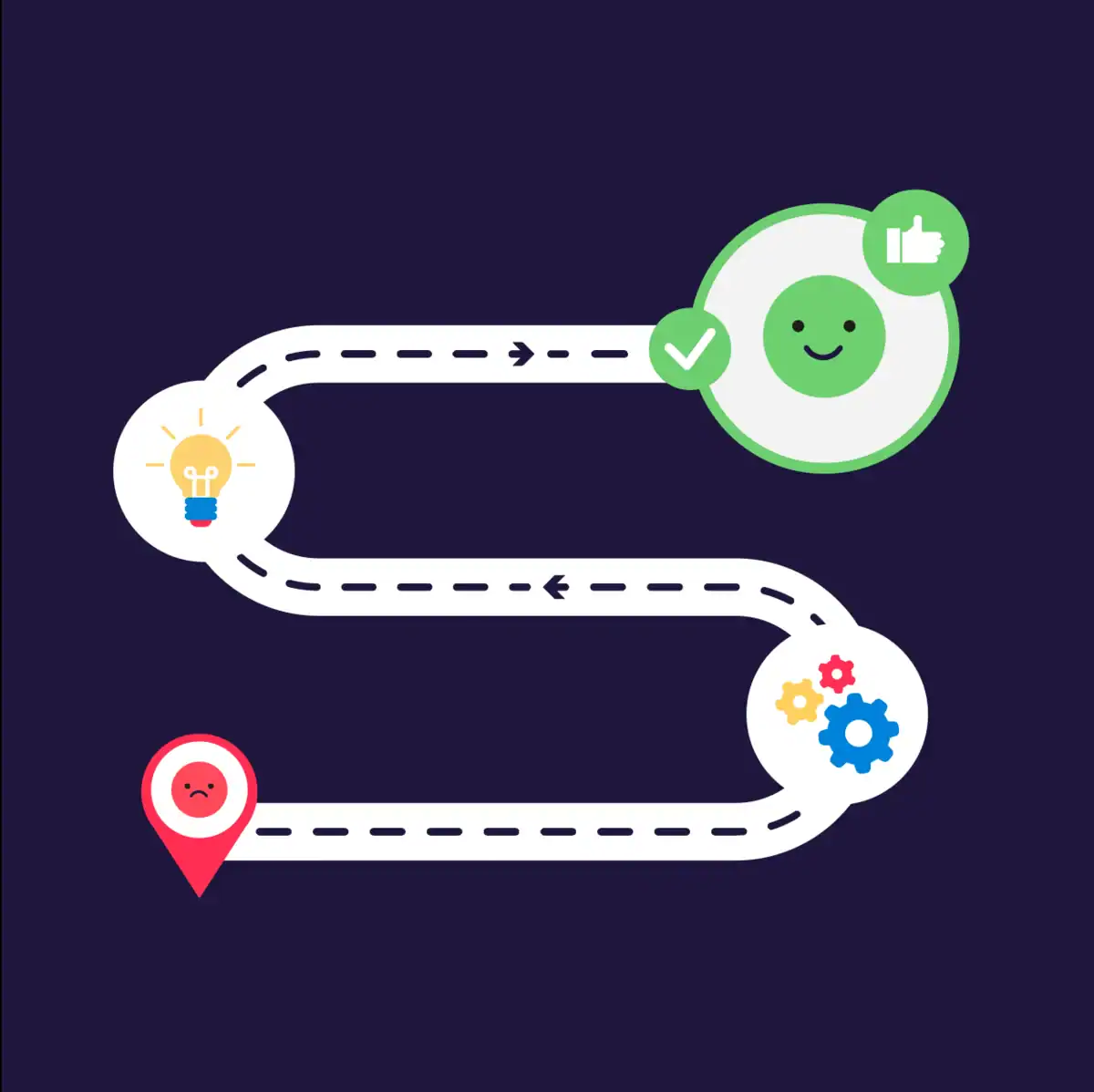
Challenge
Support that meets SLAs but fails people
In large organizations, IT support is often judged by SLA metrics like resolution time or system uptime. However, there may be a disconnect between what dashboards show and what users actually experience.
Despite meeting SLAs, teams still face:
- High support costs with little visibility into what’s actually driving value
- Customer frustration caused by poor communication or lack of context
- Frequent escalations that overwhelm service desks and erode trust
This mismatch, known as the “Watermelon Effect”, looks green on reports but red in reality. SLAs show success, yet users remain unhappy, disengaged, or blocked.
Solution
Experience Management that puts people first
Experience Management helps you measure what the users feel and improve what really matters for employees or customers – the real experience.
With Experience Management, you can:
– Identify the root of frustration, not just close tickets
– Cut down escalations by showing users what’s happening and why
– Prioritize what matters using real-time feedback, not guesswork
– Support every team from IT to HR and Facilities with consistent, transparent service
Instead of drowning in metrics that don’t reflect reality, your team gets clear signals about where to improve, and proof that your work is making a difference.
It’s not about replacing SLAs, it’s about seeing the full picture both from an operational, technical and experience point of view.

Experience Management doesn’t just measure
Use cases
Use Cases built for teams using Jira Service Management
This solution is ideal for organizations that need to empower both technical and non-technical teams, have a mature JSM setup and want to grow beyond SLAs, care about customer satisfaction (CSAT), employee experience, and continuous improvement

Scale operations while improving the overall service experience
IT Support Leaders benefit this most

Monitor and improve team performance through feedback and actionable insights
Service Desk Managers benefit this most

Design service journeys aligned with user needs
IT Process Owners benefit this most

Give customers transparency, support seamlessly
Business Teams (HR, Legal, Facilities) benefit this most
Ready to improve your Service Experience?
FAQ
What is Experience Management in Jira Service Management?
It refers to tracking and improving the overall end-user (customer or employee) experience, not just operational metrics like SLAs.
Recent trends show a shift to Experience Level Agreements (XLAs) that measure qualitative aspects such as satisfaction and perceived value, alongside traditional SLAs. Know more on how to measure customer experience in JSM
How does the solution work?
– Elements Connect
– Elements Pulse
– Elements Catalyst
– Elements Overview
They are available to try free for 30 days and provide a comprehensive, 360° view of the service journey inside Jira Service Management.
Can I start with one app?
If you would like to be advised or discussed your needs, you can book a demo.res integration or apps to gather and analyze true experience and sentiment data
How do you measure experience in Jira Service Management?
– Customer Satisfaction (CSAT) scores
– Net Promoter Score (NPS)
– First Contact Resolution
– Feedback embedded directly into the service workflow
– Correlation of user feedback with service performance data
Jira Service Management offers robust SLA tracking but overlooks genuine experience and sentiment data
Where is my data stored?
We’re part of the Atlassian Marketplace Cloud Security Program, and our apps are Cloud Fortified—the highest security level for Marketplace Partners. For more details, visit our Trust Center.
What are the main pain points for users regarding Experience Management in JSM?
Agents experience ticket overload during major incidents due to duplicate submissions.
Limited self-service capabilities can decrease customer satisfaction and increase manual workload for agents.
Frustration around communication gaps and a lack of adaptive forms or contextual support
What data is used to compute experience metrics?
Elements Pulse and Elements Catalyst collect data from Jira Service Management projects, including operational metrics like SLAs, service catalog usage, and relevance. These insights are aggregated into real-time dashboards and reports to help IT teams track service quality, user satisfaction, and catalog performance.



